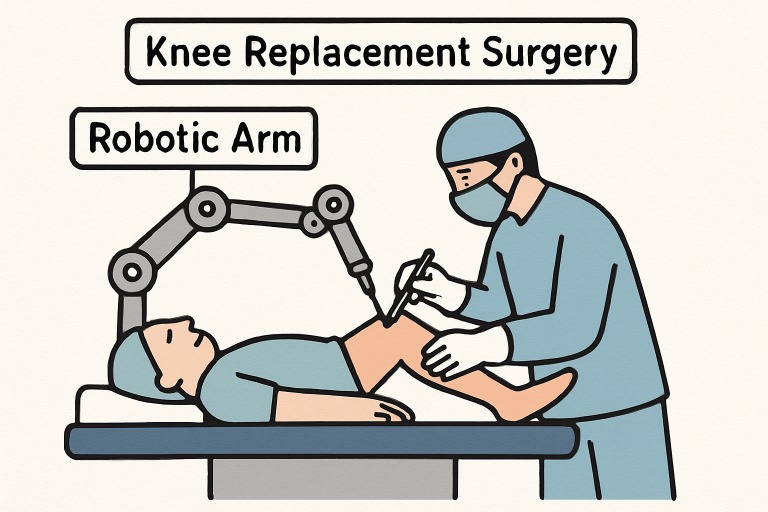Key Takeaways
- Robotic systems are enhancing precision and outcomes in orthopedic surgeries.
- Patients experience faster recovery times and reduced complications with robotic-assisted procedures.
- Integration of artificial intelligence (AI) is further personalizing orthopedic care.
Table of Contents
- Introduction
- Evolution of Robotics in Orthopedic Surgery
- Current Robotic Systems and Their Applications
- Benefits of Robotic-Assisted Orthopedic Surgeries
- Patient Perspectives and Outcomes
- Integration of AI in Orthopedic Care
- Challenges and Future Directions
- Conclusion
Introduction
Robotics is ushering in a new era in orthopedic surgery, providing surgeons with advanced tools that significantly augment their precision and capabilities. These technologies are not only helping surgeons achieve more efficient results but also transforming the patient experience at every stage of care. For a deeper insight into how these robotics improve real-world surgical outcomes, explore this comprehensive resource on how Mako robotics improves orthopedic surgery outcomes.
In recent years, the adoption of robotic-assisted systems has steadily grown, bridging the gap between advanced computer guidance and human expertise. With ongoing innovation, orthopedic surgery is poised to become increasingly personalized and less invasive, resulting in improved recovery times, reduced complications, and better outcomes for patients worldwide.
Evolution of Robotics in Orthopedic Surgery
The development of robotics in orthopedics can be traced back to early computer-assisted devices designed to help surgeons perform intricate procedures with precision and accuracy. Initial systems focused on tasks such as bone shaping and implant positioning, but technology quickly advanced to incorporate real-time imaging, interactive feedback, and even machine learning algorithms to enhance outcomes continually. Today’s robotic platforms offer greater dexterity, enabling minimally invasive techniques that were once unimaginable in complex joint replacements or spinal reconstructions.
This evolution reflects the broader trend in medicine toward precision-driven interventions, where data and analytics enhance every decision-making step. The leap in sophistication has led to substantial reductions in human error, consistent surgical protocols, and the ability to plan surgery according to each patient’s unique anatomy.
Current Robotic Systems and Their Applications
Modern robotic systems are instrumental in reshaping orthopedic practice. Their applications span several high-impact areas:
- Joint Replacement: Robots provide guided assistance for tasks like cutting bone and positioning implants during hip and knee replacements. This level of accuracy minimizes misalignment and extends the lifespan of prosthetic joints.
- Spinal Procedures: Surgical robots assist in accurately placing screws and hardware in the spine, a delicate process where even slight deviations can impact a patient’s nervous system and mobility.
- Sports Medicine: Advanced robotics enables minimally invasive repairs for ligament and tendon injuries, particularly in the shoulders and knees, thereby reducing recovery times and complications.
For additional insights into the latest advancements in medical robotics across specialties, see this detailed overview on how robotic surgery is transforming healthcare.
Benefits of Robotic-Assisted Orthopedic Surgeries
- Enhanced Precision: Robotic platforms rely on precise mapping and real-time analytics to ensure accurate and precise operation. As a result, surgeries benefit from remarkable accuracy, significantly reducing the likelihood of intraoperative errors.
- Personalized Surgery: Imaging and robotic guidance enable each procedure to be tailored to the patient’s unique anatomy, thereby improving implant fit and joint function after surgery.
- Minimized Tissue Damage: With smaller incisions and less disruption to healthy tissue, patients typically experience less pain, lower infection rates, and a faster recovery compared to traditional open methods.
These benefits are supported by ongoing clinical research, which consistently demonstrates improved postoperative outcomes in terms of pain reduction, joint performance, and patient satisfaction compared to conventional methods.
Patient Perspectives and Outcomes
Patients play a pivotal role in the shift toward robotics, increasingly advocating for procedures that minimize pain and promote faster mobility. Surveys indicate that those who undergo robotic-assisted orthopedic surgeries report not only less discomfort but also shorter hospital stays, reduced reliance on pain medications, and fewer complications. Postoperative rehabilitation times are likewise shortened, with many patients returning to daily routines and light activity more quickly due to the minimally invasive approach.
Long-term studies reveal additional advantages, including lower rates of revision surgeries and improved implant longevity, which further bolster patient confidence in robotic technology. Transparent communication from healthcare providers about what to expect with robotic systems also helps demystify potential uncertainties, thus improving patient comfort and overall satisfaction with their care journey.
Integration of AI in Orthopedic Care
The advent of artificial intelligence (AI) is accelerating progress in surgical robotics. AI-driven applications in orthopedics include sophisticated preoperative planning tools that analyze imaging data and patient history to identify optimal surgical approaches. During surgery, AI algorithms can suggest real-time adjustments, navigate intricate anatomy, and provide feedback that enhances surgical decision-making. Following the operation, AI-assisted rehabilitation programs adapt therapy protocols and monitor healing, ensuring consistent and personalized patient follow-up.
This continuous learning cycle enables robots and surgeons to jointly optimize outcomes, keeping the focus firmly on patient safety and individualized care paths. As AI continues to integrate more deeply, the potential for error reduction and efficiency gains in orthopedic procedures will only grow.
Challenges and Future Directions
Even as robotics and AI drive advancements in orthopedic care, several challenges remain. High initial costs for adopting robotic systems and the ongoing expense of maintenance can limit accessibility for smaller hospitals. Additionally, surgeons and staff require specialized training to operate and maintain these complex devices safely and effectively. There is also the need to integrate robotic technologies smoothly with established hospital workflows and electronic health records.
Looking ahead, manufacturers and healthcare providers are working to address these barriers by developing cost-effective devices, expanding training opportunities, and refining AI to streamline surgical protocols further. As these solutions roll out, it is anticipated that patients across various settings will have increased access to the transformative benefits of robotic-assisted procedures.
Conclusion
Robotic and AI technologies are revolutionizing the field of orthopedic surgery, elevating the standards for precision, personalization, and patient-centered outcomes. With continued investment and research, these innovations hold the promise of reducing barriers, improving accessibility, and ensuring better healing experiences for orthopedic patients everywhere.

